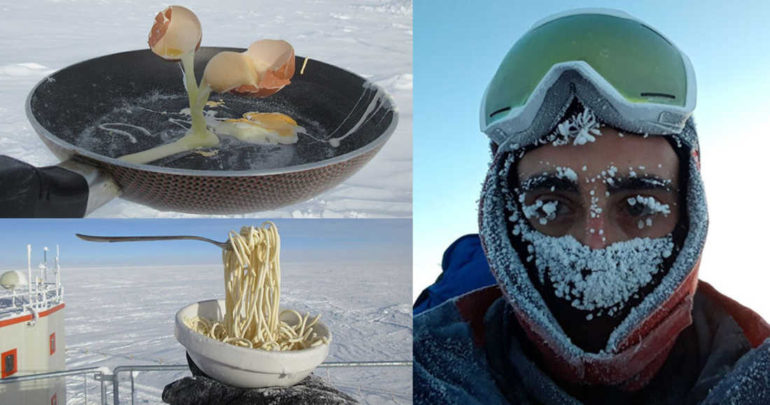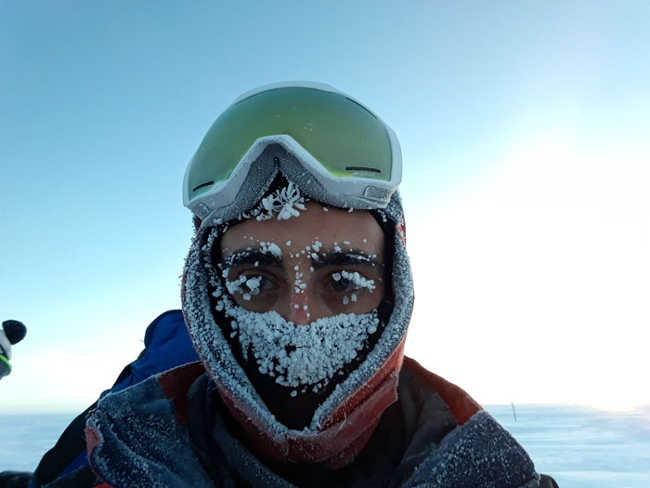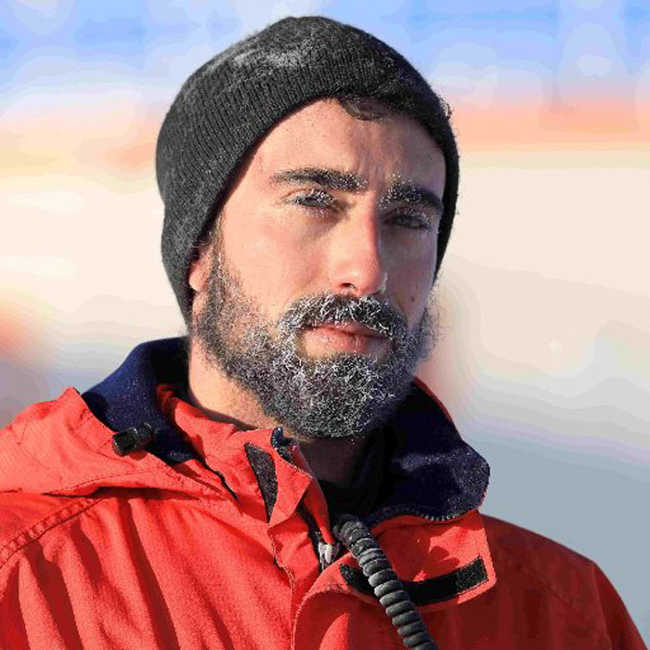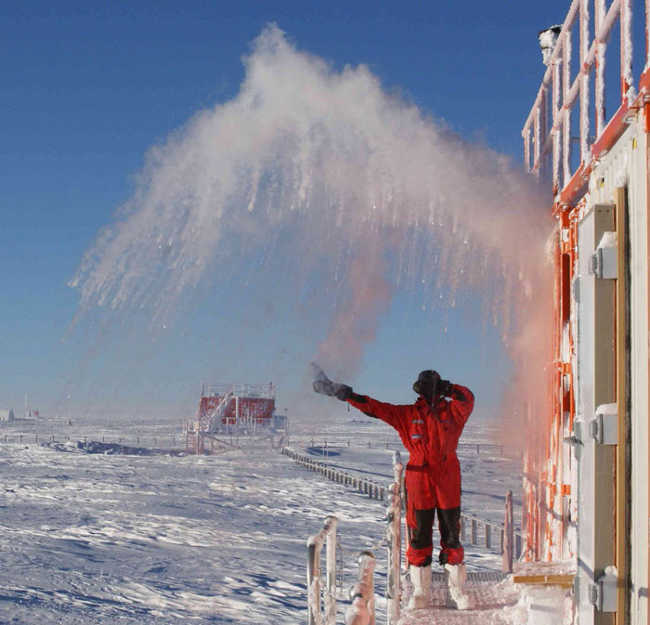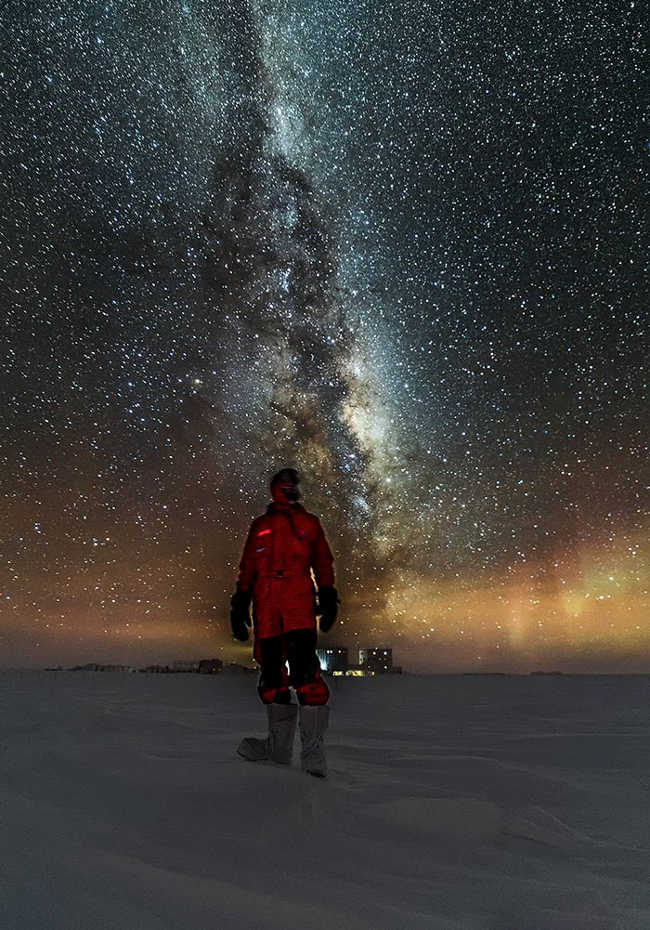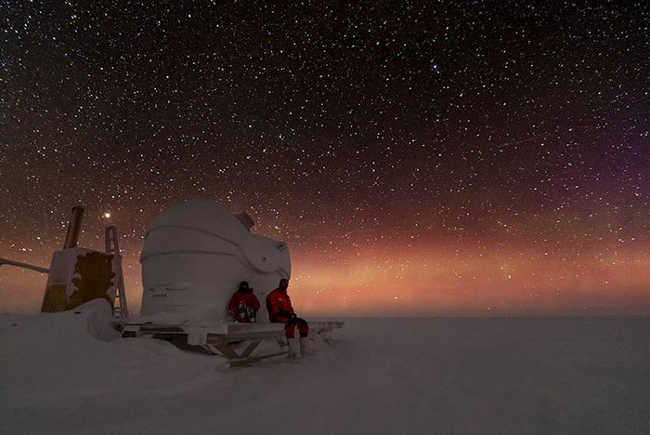Cyprien Verseux is an astrobiologist working at the world’s most remote scientific base: the Concordia Antarctic Station. Even the International Space Station, located 400 kilometers above Earth, is closer to civilization than this place.
When he is not busy collecting samples and doing research, Cyprien updates his blog to share his experiences and how to live in such extreme conditions. He and a group of other researchers live in the depths of Antarctica where even the bacteria can not survive.
“9 months a year during the winter no one can come or go. It’s so cold that vehicles can not move. We currently have 13 people here: technicians, scientists, a cook, and a doctor,” Cyprien said.
The lack of oxygen and the barren, desolate landscape make scientists feel like living on another planet. “It’s the coldest area on Earth with temperatures below -80 ° C in the winter. We saw the sun in August and before that, we had 3 months to see him. The air is extremely dry, “he added.
The work of Cyprien and his colleagues is very important because it sheds light on how the climate has changed in the past and gives a picture of the changes that can be made in the future.
Sometime Cyprien decided to go out to cook out and happily shared the photos with the results with the world.
Cyprien Verseux is an astrobiologist working at the world’s most remote scientific base: the Concordia Antarctic Station.
When he is not busy collecting samples and doing research, Cyprien updates his blog to share his experiences and how to live in such extreme conditions.
Raclette à #ConcordiaStation.
Crédits : @CPossnig et @CyprienVerseux.
© #PNRA – @ItaliAntartide / #IPEV / @esa@ItaliAntartide#DC14 #Antarctique pic.twitter.com/WdC4nj0dDg— Cyprien Verseux (@CyprienVerseux) October 7, 2018
To have fun he decided to go out cooking various dishes and share pictures with the world.
Les températures sont remontées au-dessus des -70°C, mais il fait encore un peu frais pour manger dehors…
Crédits : Carmen Possnig et Cyprien Verseux, © @ESA / #PNRA / #IPEV #ConcordiaStation #Antarctique #DC14 @ItaliAntartide pic.twitter.com/Qe57XzDTV5
— Cyprien Verseux (@CyprienVerseux) October 1, 2018
The photos seem to defy the gravity law, but in fact, it is no more than a game.
Spiegeleier nach Art des Hauses in #ConcordiaStation.
Foto von @CyprienVerseux und Carmen Possnig, © @ESA / #PNRA / #IPEV #Antarktis #DC14 @ItaliAntartide pic.twitter.com/WxkuzHZxMD
— Carmen Possnig (@CPossnig) October 3, 2018
Wonderful eggs!
Tentative (ratée) d’œufs brouillés à #ConcordiaStation.
Crédits : @CPossnig et @CyprienVerseux. © #PNRA (@ItaliAntartide) / #IPEV / @esa#Antarctique #DC14 pic.twitter.com/eJbBhKEz40
— Cyprien Verseux (@CyprienVerseux) October 3, 2018
“At the coldest part of the earth the temperature reaches below -80 ° C in the winter.”
Un petit déjeuner équilibré, sur le toit de #ConcordiaStation
Crédits : Cyprien Verseux et Carmen Possnig, © @ESA / #PNRA / #IPEV #ConcordiaStation #Antarctique #DC14 @ItaliAntartide pic.twitter.com/AvWiUBtGo4
— Cyprien Verseux (@CyprienVerseux) October 2, 2018
“We saw the sun in August, and before that, we had 3 months to see him. The air is extremely dry. “
Je m’en doutais, que déjeuner sur le toit n’était pas une bonne idée.
Photo par Carmen Possnig, © @ESA / #PNRA / #IPEV#ConcordiaStation #Antarctique #DC14 @ItaliAntartide pic.twitter.com/67Y0aWEDSI
— Cyprien Verseux (@CyprienVerseux) October 1, 2018
“We finished our fresh food early in the winter as we did not get refilled from February until November. So, we mainly eat frozen foods. “
Nutellart, ou : même le goûter n’est pas évident à prendre sur le toit de #ConcordiaStation.
Crédits : @CPossnig et @CyprienVerseux. © #PNRA (@ItaliAntartide)/#IPEV/@esa#Antarctique #DC14 @NutellaFR pic.twitter.com/QB5xt1Avo5
— Cyprien Verseux (@CyprienVerseux) October 4, 2018

